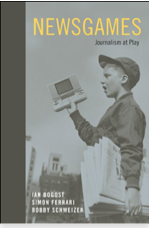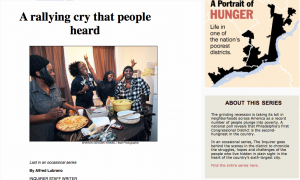I took these notes at the NABJ convention in Philadelphia in early August. Although I never got a chance to refine them, the notes will be useful for the Social Media class I will be teaching next semester.
Topic: What makes a multimedia blog successful?
Dan Farber -Great content. – the same things that make for great journalism
Neal Scarborough -Before you worry about multimedia as a blogger, decide who you are as a blogger, where your audience is or what they want.
Clay Cane – Find your style, your tone, and what you are passionate writing about. He started with a personal blog and was discovered by BET because he built a strong following. “It really is being your own brand, and selling yourself.”
Sarah Bernard, Deputy Director of Digital Strategy, the White House: Use your blog to cover undeserved stories. Be consistent.
Question: How do you drive traffic?
Clay Cane collects email subscriptions, sends out blasts when he has big news. Example: he posted an interview with Janet Jackson to his site and sent out masse emails. Some major news sites picked it up and linked to him.
Farber: learn about SEO
Moderator Markette Smith: Shows Alexa.com. She is collecting questions via twitter at #nabjbloggingandbeyond. Question: can we attract advertising?
Cane: He got started with Blogads.com. Notes that advertising market has changed.
Scarborough: “Blogging has really opened up.” Bites that Richard Branson has a blog.
Question: Publisher of a niche blog for lawyers wants to know how to make more money.
Moderator Smith tries to go back to how to make money.
More later: running out of power and this room is short on outlets.



